Twiddle Blog
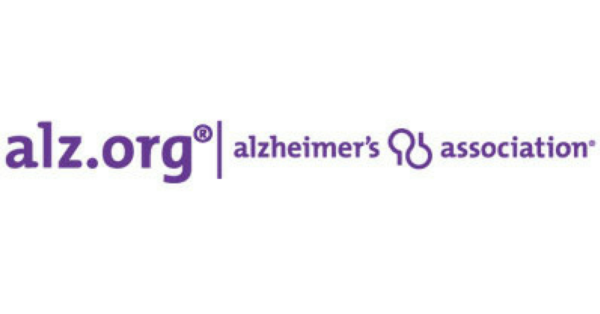
ORGANIZATIONS MAKING STRIDES IN THE RESEARCH AND TREATMENT OF ALZHEIMER’S AND DEMENTIA
The Alzheimer’s Association, founded in 1980, leads global voluntary health in Alzheimer’s care, support and research. Their mission is to eliminate Alzheimer’s disease through the advancement of research; to provide and enhance care and support for all affected; and to reduce the risk of dementia through the promotion of brain health. The Alzheimer’s Association’s research grant program has raised over $385 million for more than 2,500 scientific investigations to help accelerate research and progress treatments. They also support people affected by dementia by providing a 24/7 helpline (1.800.272.3900) offering information and advice in over 200 languages as well hosting numerous support groups and educational sessions.
To learn more about The Alzheimer’s Association visit: www.alz.org/

The Dementia Discovery Fund (DDF) is a venture capitalist fund managed by specialists and world-class neuroscientists that invests in innovative dementia research. The fund has offices in London, San Francisco, and Boston, and raises money from the private sector, industry, and charities. The Dementia Discovery Fund recently received a lot of publicity after Bill Gates personally invested $100 million into the fund in 2017. The fund invests anywhere between £100,000 – £10 million in projects that test hypotheses regarding dementia and its treatment and companies that can generate “proof-of-concept data”. DDF’s growing portfolio includes companies such as Gen2 Neuroscience, Cerevance, Tiaki Therapeutics, DDF ChemCo, and Alector.
To learn more about The Dementia Discovery Fund visit: theddfund.com/

The Cure Alzheimer’s Fund is a non-profit organization dedicated to funding research with the highest probability of preventing, slowing or reversing Alzheimer’s disease. Founded in 2004, this organization has raised over $50 million for dementia research. An excellent aspect of the funding structure is that the board covers all overhead expenses so that every penny of funds raised goes directly to research. The size of their initial investments in projects ranges from $250,000-$700,000. Since 2015, the CAF has invested in numerous projects including Analytical and Statistical Tools for Sequence Analysis of Alzheimer’s Disease, Molecular and Cellular Mechanisms of the ACE1 Variant in Alzheimer’s Disease, and Pathway Cross-talks Associated with Sex and Risk for Alzheimer’s Disease. The Cure Alzheimer’s Fund will execute research and studies through their research consortium, comprised of accomplished scientists working at state of the art research institutions around the United States.
To learn more about the Cure Alzheimer’s Fund visit: curealz.org/our-story

Founded in 2006, the Alzheimer’s Drug Discovery Foundation has focused on research advancing drugs and treatment of Alzheimer’s disease. ADDF has helped fund 20% of all Alzheimer’s treatments currently in clinical trials. They have invested $90 million in over 500 drug research programs in 18 countries. The Alzheimer Drug Discovery fund provided seed capital to Amyvid™ which successfully obtained FDA approval in 2012. Amyvid is a Positron Emission Tomography imaging technology that estimates beta-amyloid neuritic plaque density of patients being evaluated for Alzheimer’s disease. Organizations that have received investments from ADDF have gone on to obtain commitments of over $2.5 billion of follow-up funding from venture capitalists, pharmaceutical companies, and other investors.
To learn more about the Drug Discovery Foundation visit: www.alzdiscovery.org
These are only some of the many cutting-edge, amazing companies and organizations whose sole purpose are finding a cure for Alzheimer’s and improving the lives of people who suffer from its disease. It is encouraging to see so many well-funded organizations bringing together some of the most intelligent and forward-thinking experts in their fields to solve this pressing issue. Q3 Enterprises is another company that strives to help people with Alzheimer’s by providing Twiddles—drug-free, therapeutic sensory and memory support aids for people with dementia and other sensory-related conditions.
Follow Twiddle on Facebook (Twiddle Therapeutic) and Instagram (@4Twiddle) to learn about more about Twiddles, and to stay informed with our blog.
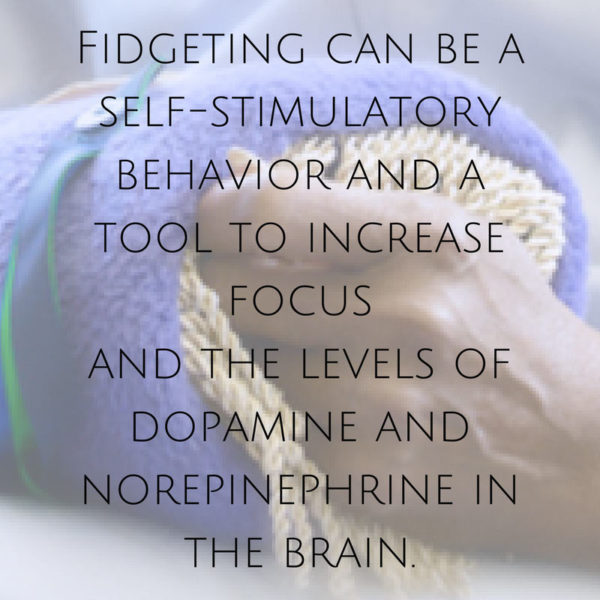
MOVEMENT, MEMORY, AND COGNITIVE FUNCTIONING
Physical movement and well-being can have a direct and positive impact on mental health, cognitive functioning, and memory. Physical movement can include anything from strenuous activities like exercising to actions as small as fidgeting and hand use. Using movement as a method for improving well-being has the potential to heighten quality of life for anyone including people with Alzheimer’s Disease, autism, and ADHD. Reducing stress and anxiety while stimulating the mind can decrease the severity of symptoms that coincide with certain conditions as well as alter the experience of living with a disorder or disease.
Elevated intensity and endurance of muscle activity including exercise has been proven to directly impact the brain and mental function through physiological changes. Alterations in metabolic processes and the autonomic nervous system changes and effects hormone levels, the immune system, neurotransmitters and endocannabinoids. The American Academy of Neurology released research that found that exercising at least twice a week improved thinking and memory in people with mild cognitive impairment, and has the potential to slow the rate at which Alzheimer’s or dementia progresses. Exercise also improves cognitive thinking by boosting mood, improving sleep quality, and reducing stress and anxiety.
Hand use and fidgeting is movement that also improves mood, memory, and concentration, but not in the same way. Fidgeting can be a self-stimulatory behavior and a tool to increase focus and the levels of dopamine and norepinephrine in the brain. Fidgeting is a behavior sometimes seen in people that have sensory-related conditions such as autism. Certain textures and other sensory inputs can be calming and used to counteract anxiety to enable better focus and feelings of contentedness. Gardening, knitting, fixing things, and playing an instrument are all examples of hand use. Active and functioning hands initiate thinking that can often be creative and joyful. Such activities are great ways to modify depression and decrease stress.
Twiddles® are therapeutic sensory and memory support aids and an excellent tool for developing fine motor control and skills, and improving strength and dexterity. Twiddles keep youngsters and elders active and stimulated as they move their hands, engage with fidgets and explore Twiddles’ many textures and features. Follow Twiddle on Facebook (Twiddle Therapeutic) and Instagram (@4Twiddle) to learn about more about Twiddles, and to stay informed with our blog.
- buildpt. “Exercise May Improve Your Memory.” Ideal Motion PT, 2 Feb. 2018,
- Rotz, Ph.D. Roland, and Sarah D. Wright. “The Body-Brain Connection: How Fidgeting Sharpens Focus.” ADDitude, ADDitude, 9 Feb. 2018
- Shafir, Tal. “Using Movement to Regulate Emotion: Neurophysiological Findings and Their Application in Psychotherapy23.” Frontiers in Psychology, Frontiers Media S.A., 23 Sept. 2016
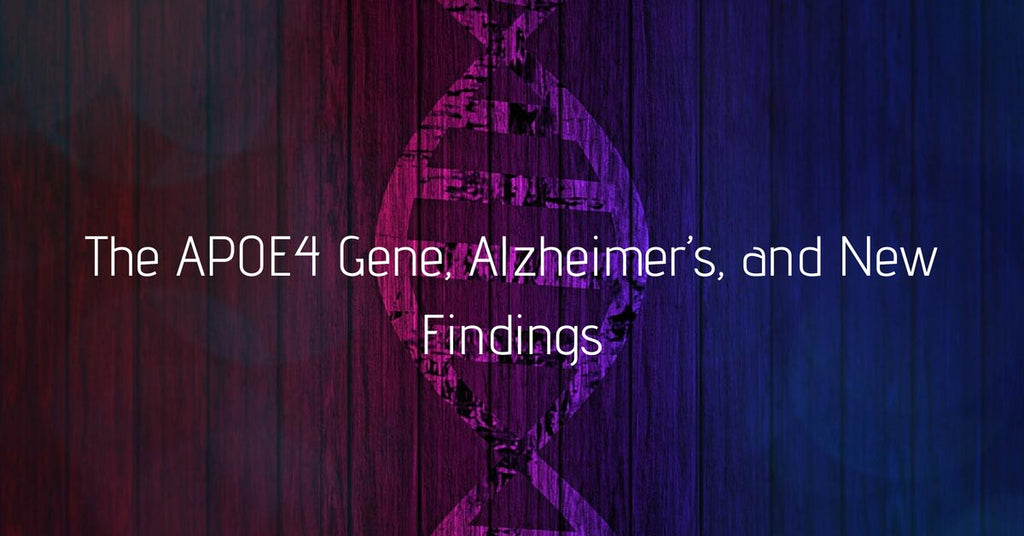
THE APOE4 GENE, ALZHEIMER’S, AND NEW FINDINGS
The medical and Alzheimer’s communities are excited about recent discoveries revolving around correcting and understanding the gene variation most linked to the development of Alzheimer’s. It has been known for several years that the APOE4 gene variant is correlated to the development of Alzheimer’s. One copy of the APOE4 gene raises someone’s risk of developing Alzheimer’s by two to three times and having two copies makes someone 12 times more likely to develop Alzheimer’s [1].
The APOE gene provides instructions for making apolipoprotein E. This protein combines with lipids in the body to form molecules called lipoproteins. Lipoproteins package cholesterol and other fats to carry them through the bloodstream. There are at least three different variations of the APOE gene. The major ones include e2, e3, and e4. E3 is the most common allele which is found in over half of the general population [2].
Thanks to research conducted by Dr. Yadong Huang (lead investigator and professor of neurology and pathology at the University of California) and his team, we know how the APOE4 gene causes signs in human brain cells and how it is more detrimental than the APOE3 variant. An essential fact to figure out was if the APOE4 gene causes signs of dementia in the brain because it affects APOE3’s functions or because it itself has toxic effects. This fact would impact clinical care by establishing whether to increase or lower protein levels during treatment.
“If the damage is caused due to the loss of a protein’s function, you would want to increase protein levels to supplement those functions.” “But if the accumulation of a protein leads to a toxic function, you want to lower production of the protein to block its detrimental effect.” – Dr. Huang
Huang and his team of scientists discovered that the APOE4 protein has a pathogenic conformation that prevents it from functioning correctly. APOE4 increased increased production of amyloid-[beta] peptides and levels of tau phosphorylation in neurons. Their studies confirmed that it is the presence of APOE4 that causes the disease. Huang’s team realized that they could change the look and behavior of the APOE4 gene to be more like APOE3 using a previously developed small-molecule “structure corrector.” This structure corrector was able to eliminate the detrimental effects of the gene variation and is now thought to be a viable therapeutic approach to APOE4-related Alzheimer’s disease [1].
Sources:
- Sandoiu, Ana. “Breakthrough: Researchers Fix Alzheimer’s Gene.” Medicalnewstoday, 11 Apr. 2018, www.medicalnewstoday.com/articles/321455.php
- “APOE Gene – Genetics Home Reference.” U.S. National Library of Medicine, National Institutes of Health, 25 Apr. 2018, ghr.nlm.nih.gov/gene/APOE.
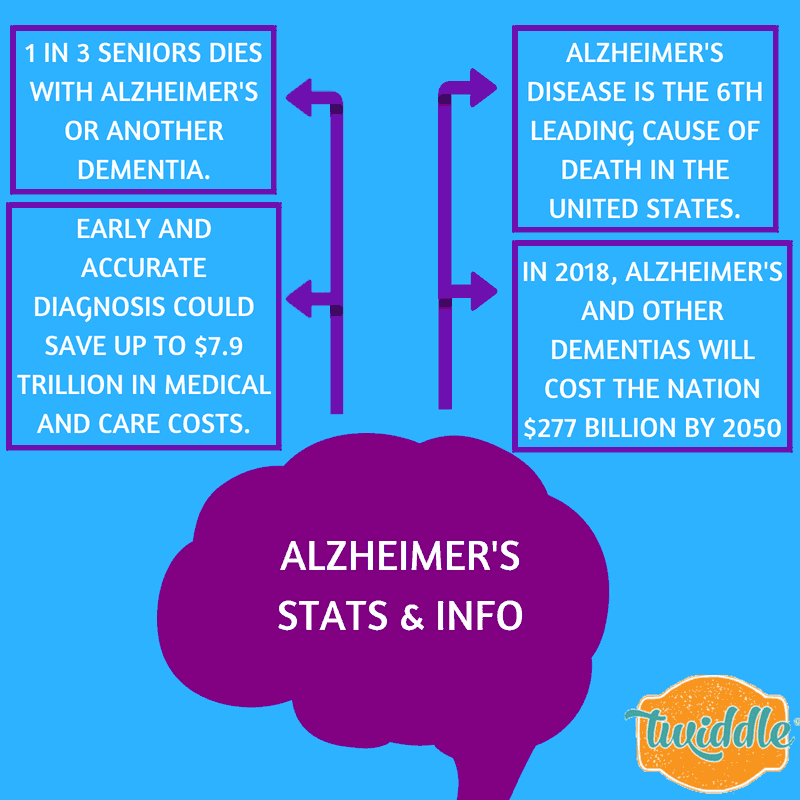
ALZHEIMER’S STATS AND FINDINGS
WHAT IS ALZHEIMER’S?
Alzheimer’s disease is a degenerative brain disease in which the death of brain cells causes memory loss and cognitive decline. Most people have late-onset Alzheimer’s, where they start displaying symptoms in their early to mid-sixties. Approximately 4% of people with the disease have early-onset Alzheimer’s, in which symptoms begin to occur between their thirties and sixties. Alzheimer’s disease is the most common form of dementia.
PREVALENCE:
|
• An estimated 5.7 million Americans of all ages are living with Alzheimer’s dementia in 2018. |
|
• There are approximately 44 million people living with Alzheimer’s disease worldwide. |
|
• There is about a 50% chance that anyone who lives beyond 80 years old will develop Alzheimer’s. |
|
• Alzheimer’s is the sixth-leading cause of death in the U.S. and the fifth-leading cause of death for those ages 65 and older. |
|
• Every 65 seconds, someone in the U.S. develops Alzheimer’s dementia. |
PROJECTIONS:
|
• The number of people with Alzheimer’s may nearly triple from 5.7 to 13.8 million by 2050. |
|
• Before 2050, the number of total dementia cases worldwide is expected to hit 130 million. |
|
• By 2025, the number of people ages 65 and older with Alzheimer’s is estimated to reach 7.1 million. |
|
• Total health care payments for people with Alzheimer’s and other dementias are projected to increase to more than $1.1 trillion in 2050. |
TREATMENT AND CAREGIVING:
|
• 16.1 million Americans provide unpaid care for people with Alzheimer’s and other dementias. |
|
• Unpaid caregivers provided an estimated 18.4 billion hours of care in 2017. |
|
• In 2017, the lifetime cost of care for a person living with dementia was $341,840. |
|
• In 2018, Alzheimer’s as well as other dementias will cost the nation $277 billion. |
|
• 48% of all caregivers who provide help to older adults do so for someone with Alzheimer’s or another dementia. |
Follow Twiddle on Facebook (Twiddle Therapeutic) and Instagram (@4Twiddles) to learn about more about Twiddles and to stay informed from our blog.
Sources:
“Facts and Figures.” Alzheimer’s Association, Alzheimer’s Association, 2018, www.alz.org/alzheimers-dementia/facts-figures.
“2018 Alzheimer’s Disease Facts & Figures Report |.” How Alzheimer’s Disease Affects the 5 Senses, 2018, https://alzheimerscareresourcecenter.com/2018-alzheimers-disease-facts-figures-report/
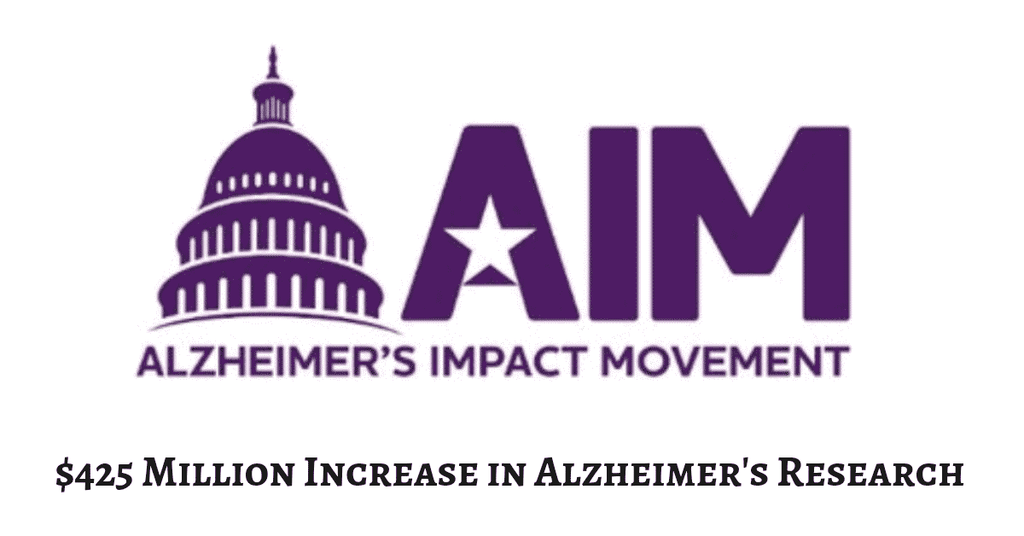
$425 MILLION INCREASE IN ALZHEIMER’S RESEARCH
research for the fiscal year of 2019, starting October 1st. On September 26th the bill was approved by the house in its final form by a 361-61 vote. It was then signed into law on September 28th, 2018. The appropriations bill included a $425 million increase in Alzheimer’s research funding, totalling $2.3 billion. This marks the largest boost in funding for Alzheimer’s research in history. The funding will go to the National Institutes of Health (NIH) to be allocated toward research, treatment, and care for people living with Alzheimer’s.
The $857 billion bill was lead by Sen. Roy Blunt (chairman of Appropriations Subcommittee on Labor-HHS) and laid out spending for the departments of Defense, Labor, Health and Human Services, and Education. The Alzheimer’s Association and Alzheimer’s Impact Movement (AIM) were the primary advocates of the $425 million increase. This is the fourth year in a row that research funding for Alzheimer’s has been increased at the NIH, appropriate to match the dramatically increasing prevalence of the disease. Currently 5.7 million people in the United States live with Alzheimer’s and this number is expected to nearly triple to 13.8 million people by 2050 with a projected annual spending of $1.1 trillion if an effective treatment is not found.
The Alzheimer’s Association states that with this increase in funding, “scientists are able to work at a more rapid pace to advance basic disease knowledge, explore ways to reduce risk, uncover new biomarkers for early diagnosis and drug targeting, and develop potential treatments.”
Bibliography:
- “$425 Million Increase in Alzheimer’s Research Funding Passes U.S. Senate.” Alzheimer’s Association, Alzheimer’s Association, 23 Aug. 2018
- Alzheimer’s Research Receives Largest Ever Funding Boost in 2019 Budget.” Alzheimer’s Association, Alzheimer’s Association, 28 Sept. 2018
- Bowers, Lois A., and Lois. “Legislation with $425 Million Increase for Alzheimer’s Headed to President’s Desk -.” McKnight’s Senior Living, 29 Sept. 2018

